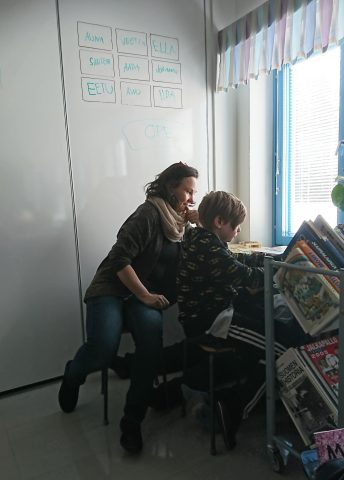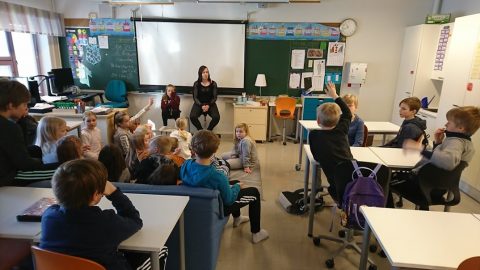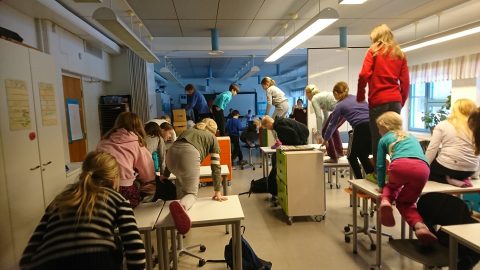Simultaneous teaching
Working as a teacher can be a lonely job. Even though you have colleagues: you have common coffee breaks with them, plan your lessons together, have dialogues and even assess together outside the classroom — nevertheless, a teacher is alone in classroom. One class, and only one teacher.
 If we are lucky, we have a team mate in the classroom: for example, a school assistant, who is in the same class during few lessons. Some teachers have even the full-time assistants. But the pedagogical responsibility lies always on one teacher.
If we are lucky, we have a team mate in the classroom: for example, a school assistant, who is in the same class during few lessons. Some teachers have even the full-time assistants. But the pedagogical responsibility lies always on one teacher.
What if there would be more teachers, sharing the same pupils and same responsibilities? Simultaneous teaching means that two teachers teach same students in the same classroom. Usually there are two different classes, who just have been put in the same room. Schools develop classroom layouts to fit in this kind of flexible teaching: walls are torn down and replaced with soundproof, opening flip walls. The room can be used as one big room or as two separate spaces.
Me and my colleague use a light model of simultaneous teaching. We have our own classes, number of children is 44 in all. On about five lessons every week the children study together, with two teachers.
The easiest way to carry out simultaneous teaching is “the boss and the firefighter” -model. We plan the lesson together, and make a deal which one of us is the boss. The boss collects all the children to a listening area. Here happens the traditional teaching, where the teacher is the boss, tells the story, teaches the topic of the day/lesson etc. 
As we all know, some of the pupils have difficulties to listen, to sit still, to concentrate. The boss teaches, and his/her colleague has a role of a firefighter: he/she walks silently in the classroom, “extinguishes the fires”: sits down next to one child if it is needed, whispering the quietness to restless children. The teachers can also have a teaching dialogue and the pupils can take a part in it.
According to our experiences this is an excellent format to try simultaneous teaching by an easy way. After the listening part pupils move back to their places and start filling out their notebooks and workbooks. Both teachers walk around and help everyone. The silence and peace in the classroom have been better this way than in a same kind of traditional teaching situation but only one teacher and only one class.
If we want to do something active and functional, we need to split those 44 children in groups, just because otherwise it gets too noisy. We share them in two groups, but both of the groups have children from both classes. Or, if we can have a resource teacher or an assistant teacher to be one adult, then we make three groups. Every adult has one workshop. We have had workshops for years like this. Teachers know both classes, and students know us. They have friends in both classes, there are no “our class” and “your class”. Just us. Sometimes we have had theme weeks when we have worked more together in a same room, sharing a project.
I once had a privilege to join an session held by two pioneer simultaneous teachers. They shared the same class, and they had only one class, even though the number of children in the class was nearly 40. They shared everything: the pedagogical responsibility, the teaching, the co-operation with parents… They worked as a team in one classroom. They described themselves as a double teacher with double classroom. The results were fantastic: double joy but half of stress and half of the work.
I sign. When the chemistry and characters with a colleague are working well this is definitely worth trying. After having even small steps of simultaneous teaching in your work, it is going to be difficult to go back to old situation where you always have only one pair of hands.


